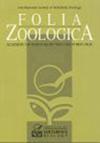通过活动模式评估释放的圈养大熊猫(Ailuropoda melanoleuca)的健康状况
Q2 Agricultural and Biological Sciences
引用次数: 1
摘要
摘要易位被认为是保护大熊猫(Ailuropoda melanoleuca)小种群免于局部灭绝的重要方法之一。对放生后大熊猫的健康状况进行动态监测,可以在必要时及时采取救援措施或终止放生程序,从而降低死亡风险。然而,通过常规的兽医检查很难诊断大熊猫易位后的健康状况。根据GPS跟踪项圈收集的数据,我们分析了六只大熊猫在释放后的行为。通过对因病死亡的大熊猫“雪雪”(XU)与4只健康大熊猫放归野外后的行为差异进行比较,探索一种评估放归后大熊猫健康状况的新方法。结果表明,健康大熊猫放归野外后的日常活动水平高于徐某;健康的大熊猫是白天活动的,而徐则倾向于夜间活动。所有健康的大熊猫和徐在黄昏阶段都不活跃。这些结果表明,日常活动水平和昼夜节律可用于评估迁移项目期间大熊猫的健康状况。本文章由计算机程序翻译,如有差异,请以英文原文为准。
Assessing the health status of released, captive-bred giant pandas (Ailuropoda melanoleuca) through activity patterns
Abstract. Translocation is believed to be one of the important methods to protect small and isolated populations of giant pandas (Ailuropoda melanoleuca) from local extinction. Dynamic monitoring of the giant pandas' health statuses after release allows timely rescue measures or termination of the release procedure when necessary, thereby reducing the risk of death. However, it is difficult to diagnose the health of a giant panda after translocation by routine veterinary examinations. Based on data collected from GPS tracking collars, we analyzed the behaviours of six giant pandas after release. We compared the behavioural differences between the giant panda Xuexue (XU), which died due to disease, and four healthy giant pandas after release into the wild to identify a new method to assess the health statuses of giant pandas after release. Our results showed that daily activity levels of the healthy giant pandas were higher than XU after released into the wild; the healthy giant pandas were diurnal, but XU tended to be nocturnal. All healthy giant pandas and XU were not active in the crepuscular phase. These results suggest that daily activity levels and circadian rhythms can be used to assess the health status of giant pandas during the translocation project.
求助全文
通过发布文献求助,成功后即可免费获取论文全文。
去求助
来源期刊

Folia Zoologica
生物-动物学
CiteScore
1.70
自引率
0.00%
发文量
0
审稿时长
3 months
期刊介绍:
Information not localized
 求助内容:
求助内容: 应助结果提醒方式:
应助结果提醒方式:


